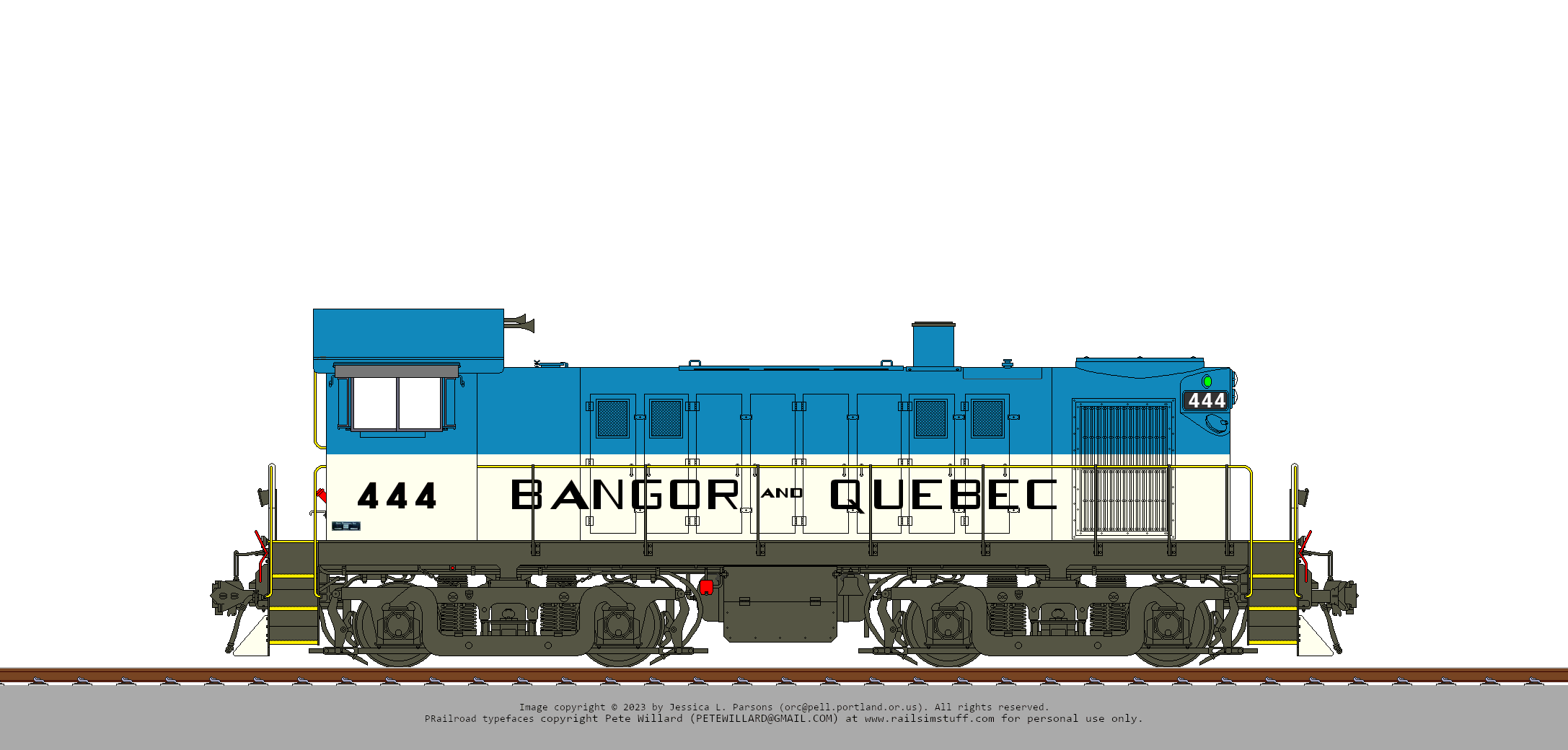The Bangor & Québec was chartered in 1874 (by the Le Coeur & Terrance Railroad) to connect to the timberlands in the interior of Maine and to a warm water port at Searsport. The railroad was finished in 1877, and soon thereafter was merged into the new Le Coeur, Terrance & Lynville Railway.
The port at Searsport was congested, so the LT&L extended the line south to Augusta in 1884. That branch saw a lot of local traffic and functioned as a feeder railroad to the PV&T and Maine Central in Augusta and to the Bangor and Aroostook in Bangor, but the line across Maine never developed any sort of bridge traffic and subsisted on a diet of lumber products from logging operations along the line.
For the first fifty years or so, this was a very rich diet indeed; there was (and still is) a lot of logging going on in Maine and the few railroads that operated through the center of the state pretty much had lumber thrown at them as fast as they could ship it. But in the late 1930s, traffic started to fall off as many of the loggers began to use trucks instead of the rails. The second world war provided a respite, but after that the traffic became very light indeed.
The LT&L made enough money on the mainline across the state to keep operating it as a connection between their system in Québec and the healthy branch between Augusta and Bangor, but when it merged with the PV&T in 1961, the new owners abandoned the mainline as soon as they could get overhead wire up on the Augusta branch.
After abandonment, the line was left intact and the corporate carcass of the old B&Q was reactivated to hold the title and find buyers, but none were found and it slowly deteriorated for the next 30 years. The southern half of the line (from Brassua Junction (CPR’s international mainline between Québec & New Brunswick)) was leased for ~a decade so a logging company could easily clear out some stands of timber they owned, and the very northern part (Lynville to the Canadian border) was transferred to the LT&L to connect a LT&L park/hunting camp to the rest of the LT&L, but the extremely scenic part of the line between the CPR & the Canadian border saw no traffic except an occasional work train piloted by TdM DL2 #306.
In 1993, the B&Q expanded slightly by leasing – then buying and reselling to the State of Maine for a rails with trails project – the MEC’s disused branch between Newport (via a tiny bit of trackage rights on the MEC between Newport Junction & Newport proper) and Dexter, which it then electrified in 1994 to remove a diesel enclave from the middle of an electrified division.
In 1995, everything changed for the B&Q; the LT&L bought the CPR’s international mainline from PQ to St John, which made the line down from Canada to the Brassua Junction became useful again. Not much – or any – local traffic except the the occasional timber move, but having this shortcut between the port at Québec & northern Maine meant that it was seeing 1-3 freights a day again.
The line from Brassua Junction south, on the other hand, stayed disused (the logging company leased the line from Monson Junction north to the Canadian border, while south of there was left more or less untouched and had picked up some pretty impressive washouts in the 30+ years after the abandonment; when the B&Q looked at taking over freight operations from Newport to Dexter they decided that the MEC branch was in better shape than home rails) so in the end the rails were finally pulled and the roadbed was given to the state for trailbuilding.
In 2026, during the third great class 1 merger binge, CSX and the B&Q reached agreements to share trackage rights from Waterville to Bangor so they could treat their more-or-less parallel lines as a single double track railway, and the both of them started putting up overhead on CSX’s ex-MEC line as part of the trackage rights. (CXS is still very dubious about the benefits of electrification. but has purchased a dozen Siemens FC-42DDA electro-diesels to operate on their mainline north from Boston.)
The B&Q never had very many locomotives; a pair of unnumbered steam engines were purchased to help build the line, and DL10 #444 was transferred to the B&Q in the early 1980s to replace #306, but all of the freight and switching on the line was/is handled with locomotives first from the LT&L (steam & diesels), then from the PV&T (motors).
